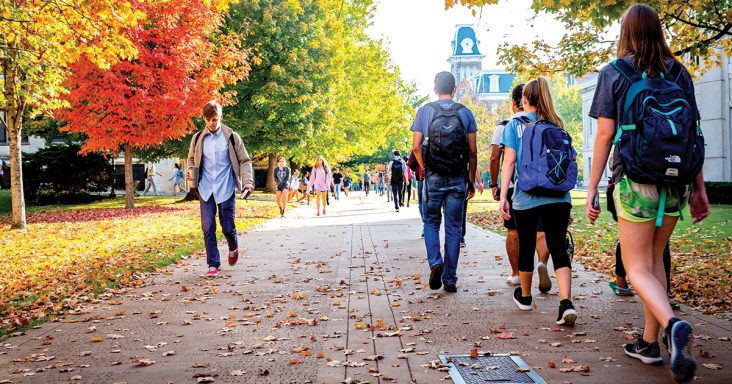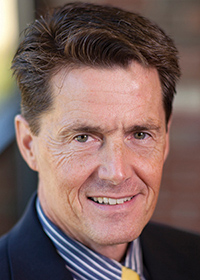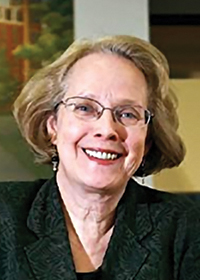Universities brace for looming enrollment cliff
by November 29, 2021 10:28 am 7,267 views

The University of Arkansas in Fayetteville has been an outlier in the state's enrollment trends, hitting a record high this fall with more than 29,000 students.
Enrollment woes continued at most universities across the state this year, and institutions are preparing for a looming enrollment cliff later this decade.
According to the Arkansas Department of Higher Education, 2011 was the last year the state saw an increase in total headcount of student enrollment in higher education institutions when a combined 173,887 students were enrolled that fall. In 2019, that number had dropped 10% to 156,491. Numbers continued to decline this fall, with all but two public institutions reporting enrollment decreases.
Those numbers are only expected to get worse in the coming decade. According to projections by the Western Interstate Commission for Higher Education, the number of high school graduates in Arkansas is expected to peak in 2024 at 35,310, before declining by more than 7% by the end of the decade to just 32,660. By 2037, the situation is even more stark — 31,210 graduates, a nearly 12% drop from the peak.
The drop in students poses a significant threat to institutions across Arkansas already facing financial hardship, causing them to pay close attention to the demographic shift and utilize an array of strategies around recruitment and retention of students.
NEED FOR AGILITY
According to Nathan Grawe, author of “Demographics and the Demand for Higher Education,” the enrollment cliff is part of a broader national trend dating back to the Great Recession. That’s when birth rates began to decline in the United States. But it’s a trend that continues, even during the robust economy in the decade that followed.
“The question is, ‘Why would we see lower fertility rates?’ I would frame that question in the opposite: why did we see the higher fertility rates? Developed nations, in general, have had much lower fertility rates than the United States,” he said. “The United States’ fertility rates today are much closer than what you would’ve expected given the high levels of income that we see in this country.”
Grawe, who recently published the book “The Agile College” about how institutions are grappling with these demographic changes, said adapting institutions are ramping up efforts to recruit more underrepresented groups. They are also focusing more on student success and retention. But he sees serious risk for schools that lack trust in leadership or are resistant to change.
“The institutions where I see some real danger are the ones where because you have eroded notions of shared governance and trust between administrators and faculty and staff, you have a hard time agreeing on the challenge that you face,” he said. “If you’re an institution that is averse to changing anything, you’d have to get good at budget-cutting.”
UTILIZING TECHNOLOGY
At the University of Arkansas at Fort Smith, enrollment has dropped steadily since its peak in 2010, when the university reported 7,719 students enrolled. This fall, the university reported an unduplicated headcount of 4,972 students, a 9.4% decrease year-over-year and a 14.2% decrease over the past two years.
For Andy Johnson, director of admissions at UAFS, addressing enrollment issues begins with improving the university’s enrollment systems and investing in student success and expanding recruiting in areas with potential for student growth.
“In a broad base, what we’re doing here is working on every facet of our operation to utilize technology to know which students to spend our relational time on and to make that process as personal to them as we can,” he said.
Part of that effort includes a redesigned website, which the university unveiled this fall to focus specifically on prospective students and utilizes a data-driven approach to help personalize the recruitment process for them. The university has also invested in student success by opening a new writing center for students and the recent hiring of an associate vice chancellor for academic support services. UAFS is also hoping to gain a more significant recruiting foothold in areas such as Northwest Arkansas.
“We’re trying to see if we can find a niche that fills the need for a four-year university that’s large enough and is backed by the University of Arkansas system but has the student population where a student can feel like they know faculty on a first-name basis and they’re not getting lost,” he said. “It’s the whole Goldilocks thing — for that student, we’re just right.”
TIGHTER RECRUITING PROCESS
While John Brown University has seen level enrollment in the past two years, Don Crandall, vice president for enrollment, said “it’s becoming tighter in the recruiting process,” noting challenges both from COVID-19 and the higher price tag as a private university.

Crandall said the university has expanded recruitment for Latinx students in the region and expanded financial resources for students, such as endowed scholarship funds to help lower the cost of attendance. And he noted that being a smaller school allows them to adapt quickly to an evolving higher education landscape.
Still, unique challenges persist – not only do they face the enrollment cliff, but Crandall said they face a “cultural cliff” as well.
“There’s a demographic shift not only in the number of people that are looking at college but also a shift culturally away from evangelical Christians,” Crandall said. “It’s not as evident here where we’re located in the country, but if you go to the East or West Coast, it’s a challenge… they’re just fighting the culture of people not even looking at Christian colleges because they feel Christians are irrelevant. That’s an issue that’s top of mind.”
‘CLIFF-RESISTANT’ COHORT
The University of Arkansas in Fayetteville has been an outlier in the state’s enrollment trends, hitting a record high this fall with more than 29,000 students. Yet the enrollment cliff is still “always front of mind,” according to Suzanne McCray, vice provost for enrollment and dean of admissions.
Not requiring test scores for students to be admitted — a practice the university started during the pandemic and has continued — has yielded more students. However, McCray notes that they watch these students “carefully” to see how they perform academically. And the university is looking to expand its presence in Texas and Oklahoma, both states that expect to see a population increase in the coming years.

The university is also investing in student success by constructing a student success center and other strategies to lower the cost of attendance, such as the Arkansas Transfer Achievement Scholarship. That allows students attending community college for two years to transfer to the UA and continue paying their community college tuition.
“We’re trying to build a cohort that will be cliff-resistant and will help us into the future avoid some of the drastic things that could possibly be coming,” McCray said.
Grawe remains optimistic that schools will do what’s necessary to adapt to the challenges despite the hardships ahead for higher education institutions.
“The reason why I’m less doom and gloom on higher ed is that I think most institutions are filled with really smart people who are motivated to not end up with that outcome,” Grawe said. “And if you have really motivated and really smart people, I anticipate that people will adapt. They won’t keep doing the same thing. They’ll try new markets. They’ll try new things. They will agree to change.”
